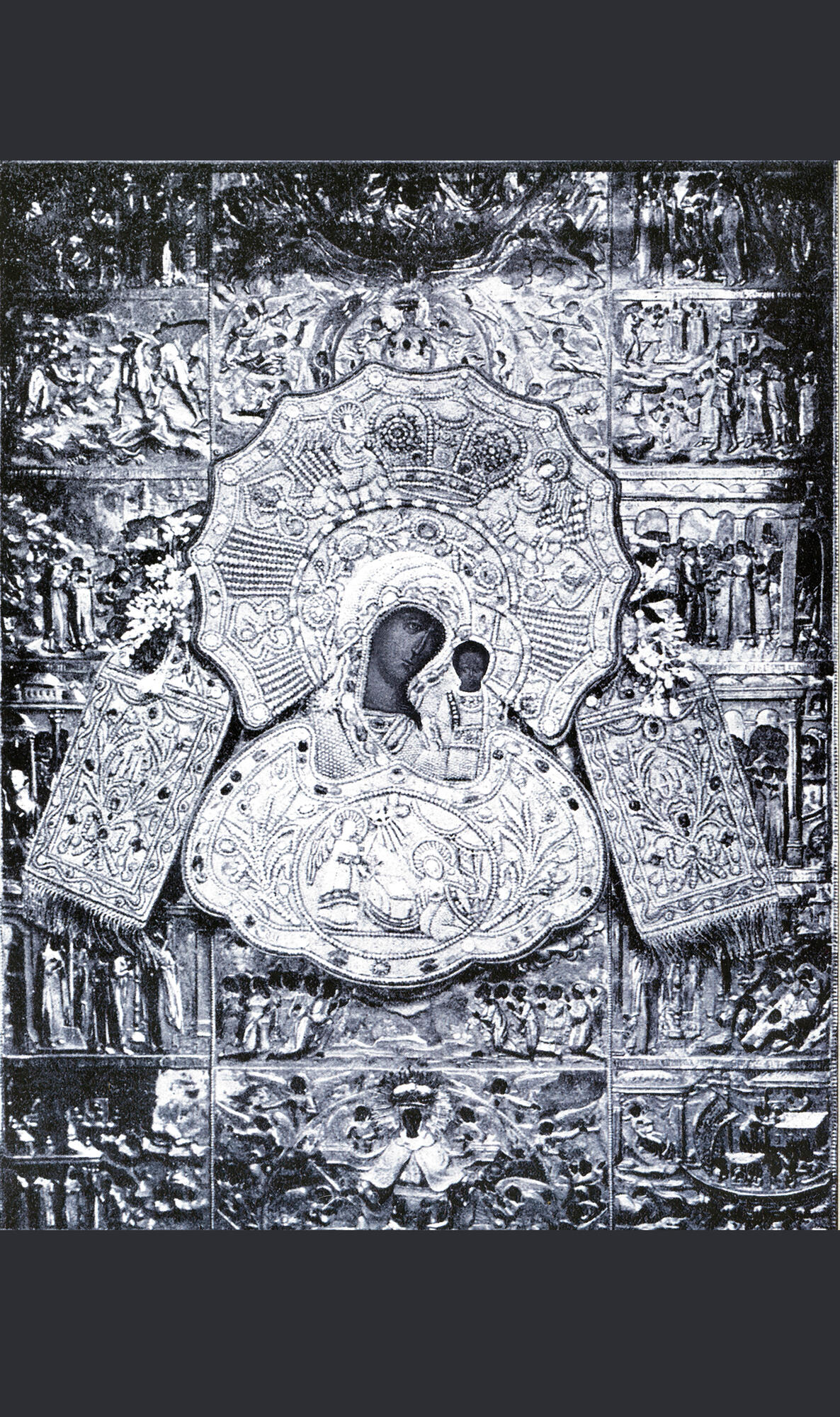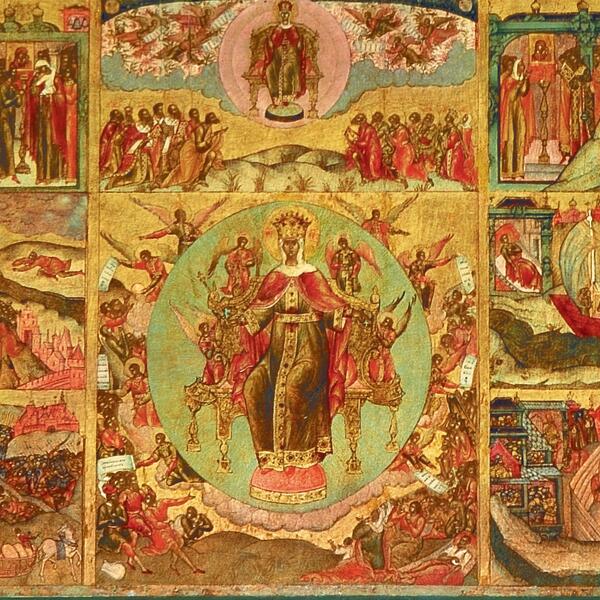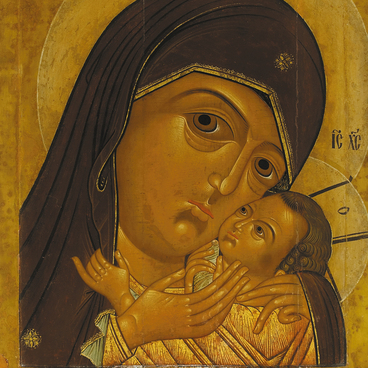This frame with 20 border scenes, created for the Yaroslavl icon of Our Lady of Kazan in the 1690s, is considered to be an outstanding example of the golden age of Yaroslavl icon painting that took place in the 17th century.
The wonderworking icon itself can be traced back to the year 1588. It was painted in Kazan, taken to Romanov (nowadays — the town of Tutayev), and later brought to Vasily Lytkin, the head of the Yaroslavl zemstvo. There it became famous for its miracles and was commemorated by the construction of the Kazan Convent. In 1931, the icon was lost.
The border scenes of the frame show the story of how the icon miraculously appeared in Kazan in 1579. This is a unique iconographic chronicle of the Time of Troubles in the Old Russian art which reflects the collective memory of the short period when Yaroslavl was the capital of Russia for four months in the year 1612.
The central column of the frame shows the Holy Trinity, and its three scenes celebrate the Virgin Mary. There are additional border scenes in the upper corners. Each of them is a multi-layer miniature scene with a dynamic story and lively figures.
Until the item’s restoration, its origin and painter remained unknown. It was only after the top-class icon conservator Natalya Ivanovna Betina restored the image in 2001, that experts started studying its story and identified the painter who might have created it. Presumably, it was the famous Yaroslavl icon painter Lavrenty Sevastianov (also known as Illarion Sevastianov, or Bashka, 1653–1717). He lived in the parish of the Church of the Resurrection, in the Sretenskaya Sotnya, where his large studio was also located. It is known that he painted the Church of the Vernicle (1676) and two icons for the Fyodorovskaya Church in Yaroslavl: the Holy Trinity and the “Nicholas with Wonders” (Nicholas with 24 hagiographical border scenes). In 1693, Sevastianov became head of the town’s brotherhood of icon painters.
The experts identified Sevastianov as the painter after comparing the frame from the Yaroslavl Museum with the one from the Kazan Convent. No documentary proof has been found so far. For a long time, the right to the frame of the wonderworking icon was contested by the representatives of the Russian Orthodox Church and museum employees. Due to the fragile structure of the frame, it was left at the Yaroslavl Art Museum, under the supervision of icon conservators. An exact copy of the frame with all the border scenes was created specifically for the Kazan Convent and donated to the convent in November 2013.
The wonderworking icon itself can be traced back to the year 1588. It was painted in Kazan, taken to Romanov (nowadays — the town of Tutayev), and later brought to Vasily Lytkin, the head of the Yaroslavl zemstvo. There it became famous for its miracles and was commemorated by the construction of the Kazan Convent. In 1931, the icon was lost.
The border scenes of the frame show the story of how the icon miraculously appeared in Kazan in 1579. This is a unique iconographic chronicle of the Time of Troubles in the Old Russian art which reflects the collective memory of the short period when Yaroslavl was the capital of Russia for four months in the year 1612.
The central column of the frame shows the Holy Trinity, and its three scenes celebrate the Virgin Mary. There are additional border scenes in the upper corners. Each of them is a multi-layer miniature scene with a dynamic story and lively figures.
Until the item’s restoration, its origin and painter remained unknown. It was only after the top-class icon conservator Natalya Ivanovna Betina restored the image in 2001, that experts started studying its story and identified the painter who might have created it. Presumably, it was the famous Yaroslavl icon painter Lavrenty Sevastianov (also known as Illarion Sevastianov, or Bashka, 1653–1717). He lived in the parish of the Church of the Resurrection, in the Sretenskaya Sotnya, where his large studio was also located. It is known that he painted the Church of the Vernicle (1676) and two icons for the Fyodorovskaya Church in Yaroslavl: the Holy Trinity and the “Nicholas with Wonders” (Nicholas with 24 hagiographical border scenes). In 1693, Sevastianov became head of the town’s brotherhood of icon painters.
The experts identified Sevastianov as the painter after comparing the frame from the Yaroslavl Museum with the one from the Kazan Convent. No documentary proof has been found so far. For a long time, the right to the frame of the wonderworking icon was contested by the representatives of the Russian Orthodox Church and museum employees. Due to the fragile structure of the frame, it was left at the Yaroslavl Art Museum, under the supervision of icon conservators. An exact copy of the frame with all the border scenes was created specifically for the Kazan Convent and donated to the convent in November 2013.



